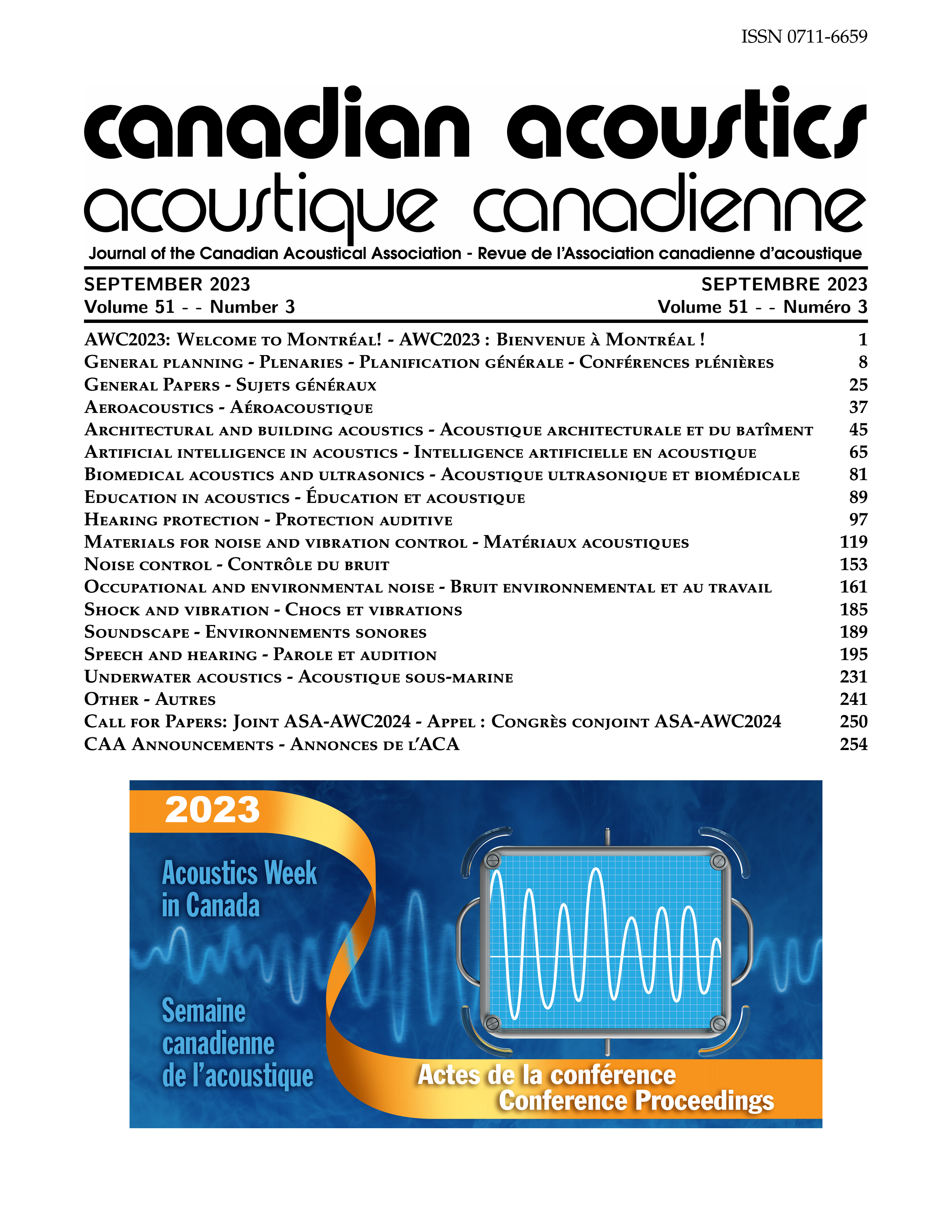Increasing Detectability and Reducing Annoyance of Alarm Design Using Acoustic Structures of Musical Instruments
Résumé
Auditory alarms play a crucial role in safety critical contexts such as medical devices. Traditionally, alarms utilize sustained harmonics that lack the temporal dynamics found in complex sounds which are not easily detectable unless played at a high volume, leading to increased annoyance (Foley et al., 2023). Here we explore how insights from musical instruments can be used to improve auditory alarms by balancing annoyance and detectability. We synthesized tones mimicking key properties of a musical triangle—an instrument known to “cut through” large ensembles without being annoying. We then tested two classes of stimuli, (1) a triangle inspired and (2) a standard alarm tone. The triangle stimuli feature twelve of the most prominent frequencies, amplitudes, and temporal variation from a recording of a triangle, including a percussive amplitude envelope. Standard tone follows conventional approaches with the fundamental at 261 Hz and four additional harmonics, shaped with a flat amplitude envelope. To compare the triangle to the standard tone, we conducted an in-person detection and an online annoyance rating experiment. For detection, participants indicated if the auditory stimulus is heard when presented a range of signal-to-noise (SNR) ratios. For annoyance, participants rated which tone is perceived as more annoying across SNRs in a two-alternative forced choice task. As expected, reductions in SNR led to reductions in annoyance X2(5, N = 4488) = 478.01, p .05. This suggests that features of musical instruments such as the triangle could provide useful insight for reducing alarm annoyance while preserving detectability.Fichiers supplémentaires
Publié-e
Comment citer
Numéro
Rubrique
Licence
Author Licensing Addendum
This Licensing Addendum ("Addendum") is entered into between the undersigned Author(s) and Canadian Acoustics journal published by the Canadian Acoustical Association (hereinafter referred to as the "Publisher"). The Author(s) and the Publisher agree as follows:
-
Retained Rights: The Author(s) retain(s) the following rights:
- The right to reproduce, distribute, and publicly display the Work on the Author's personal website or the website of the Author's institution.
- The right to use the Work in the Author's teaching activities and presentations.
- The right to include the Work in a compilation for the Author's personal use, not for sale.
-
Grant of License: The Author(s) grant(s) to the Publisher a worldwide exclusive license to publish, reproduce, distribute, and display the Work in Canadian Acoustics and any other formats and media deemed appropriate by the Publisher.
-
Attribution: The Publisher agrees to include proper attribution to the Author(s) in all publications and reproductions of the Work.
-
No Conflict: This Addendum is intended to be in harmony with, and not in conflict with, the terms and conditions of the original agreement entered into between the Author(s) and the Publisher.
-
Copyright Clause: Copyright on articles is held by the Author(s). The corresponding Author has the right to grant on behalf of all Authors and does grant on behalf of all Authors, a worldwide exclusive license to the Publisher and its licensees in perpetuity, in all forms, formats, and media (whether known now or created in the future), including but not limited to the rights to publish, reproduce, distribute, display, store, translate, create adaptations, reprints, include within collections, and create summaries, extracts, and/or abstracts of the Contribution.


